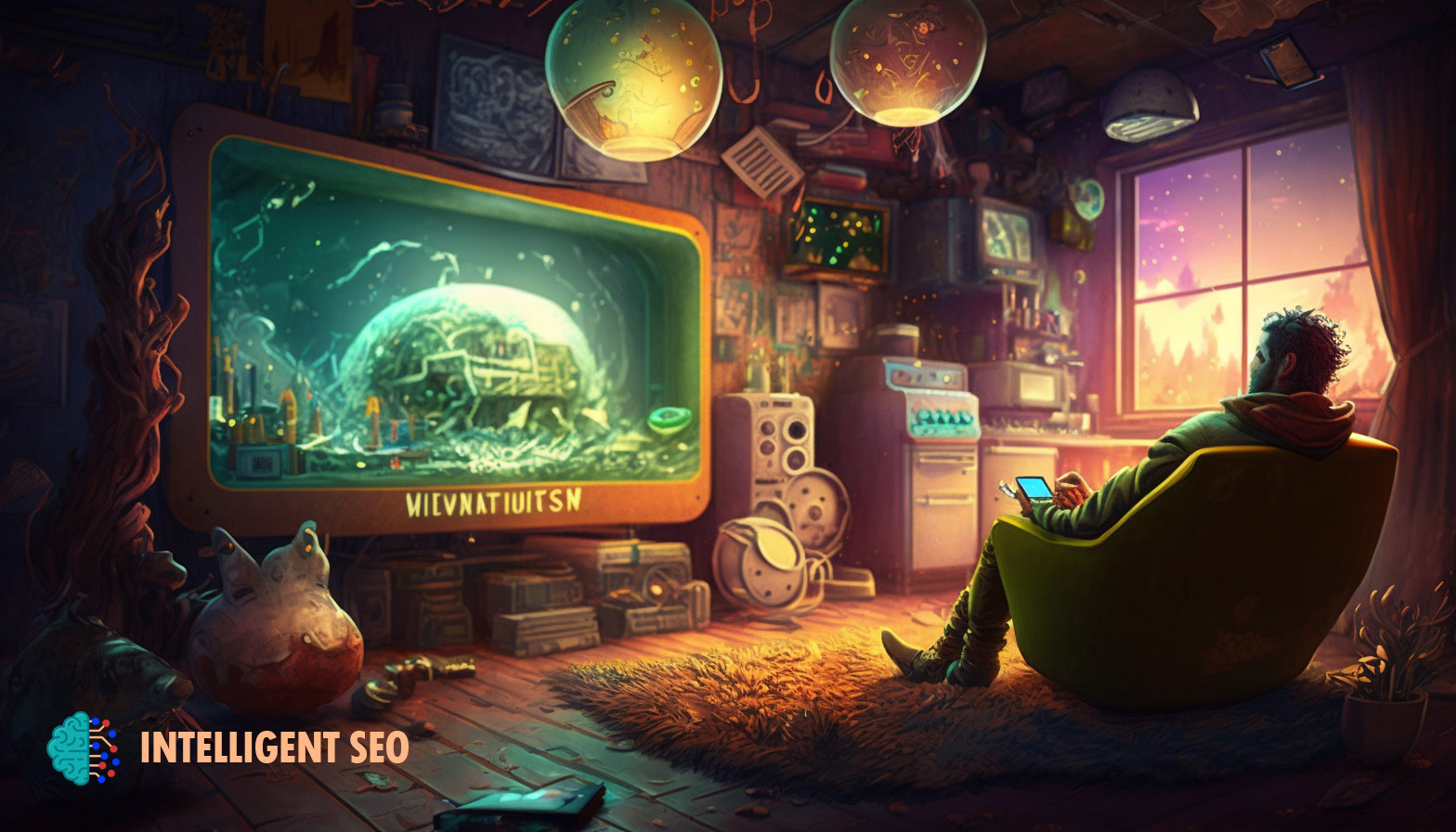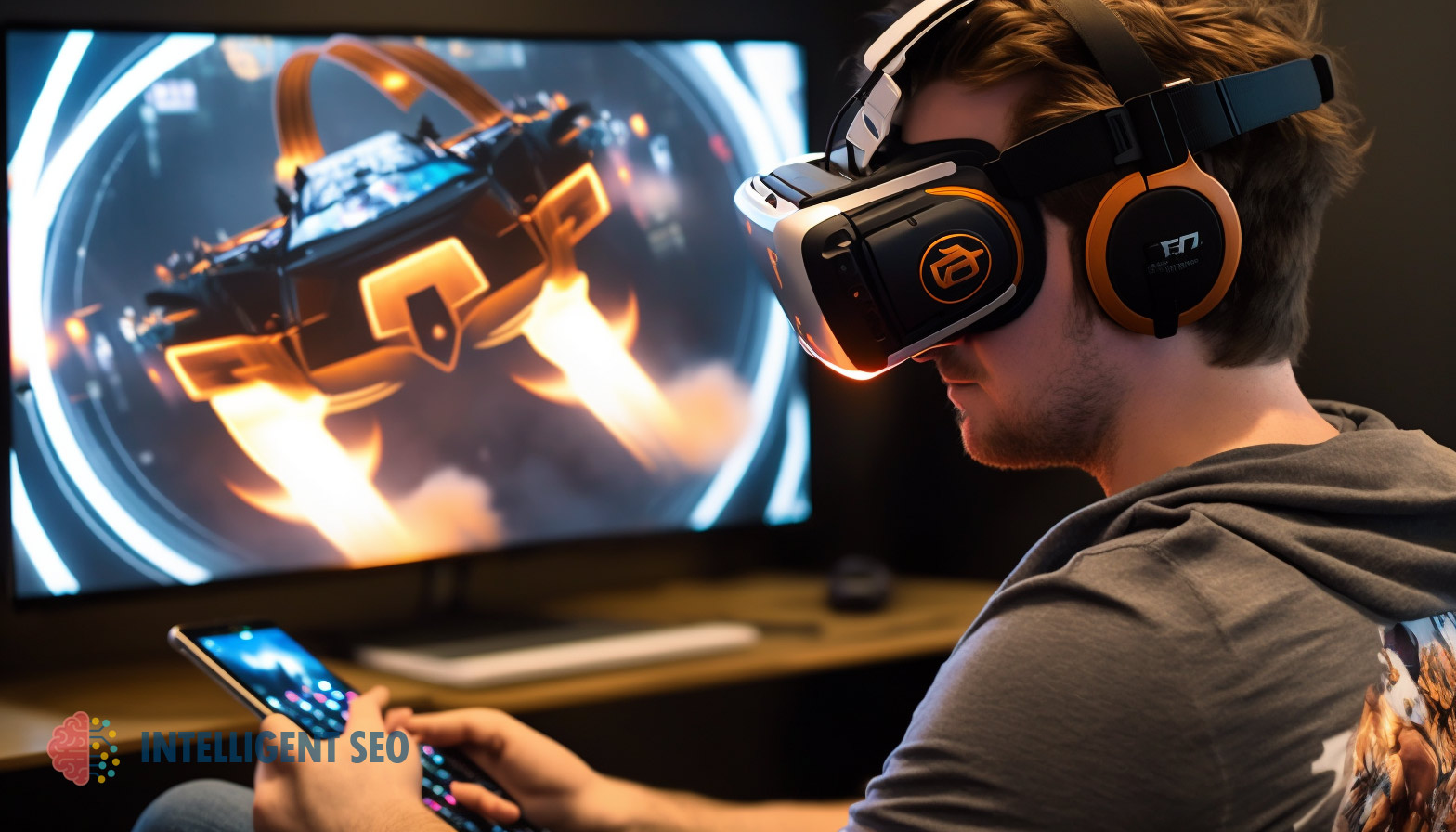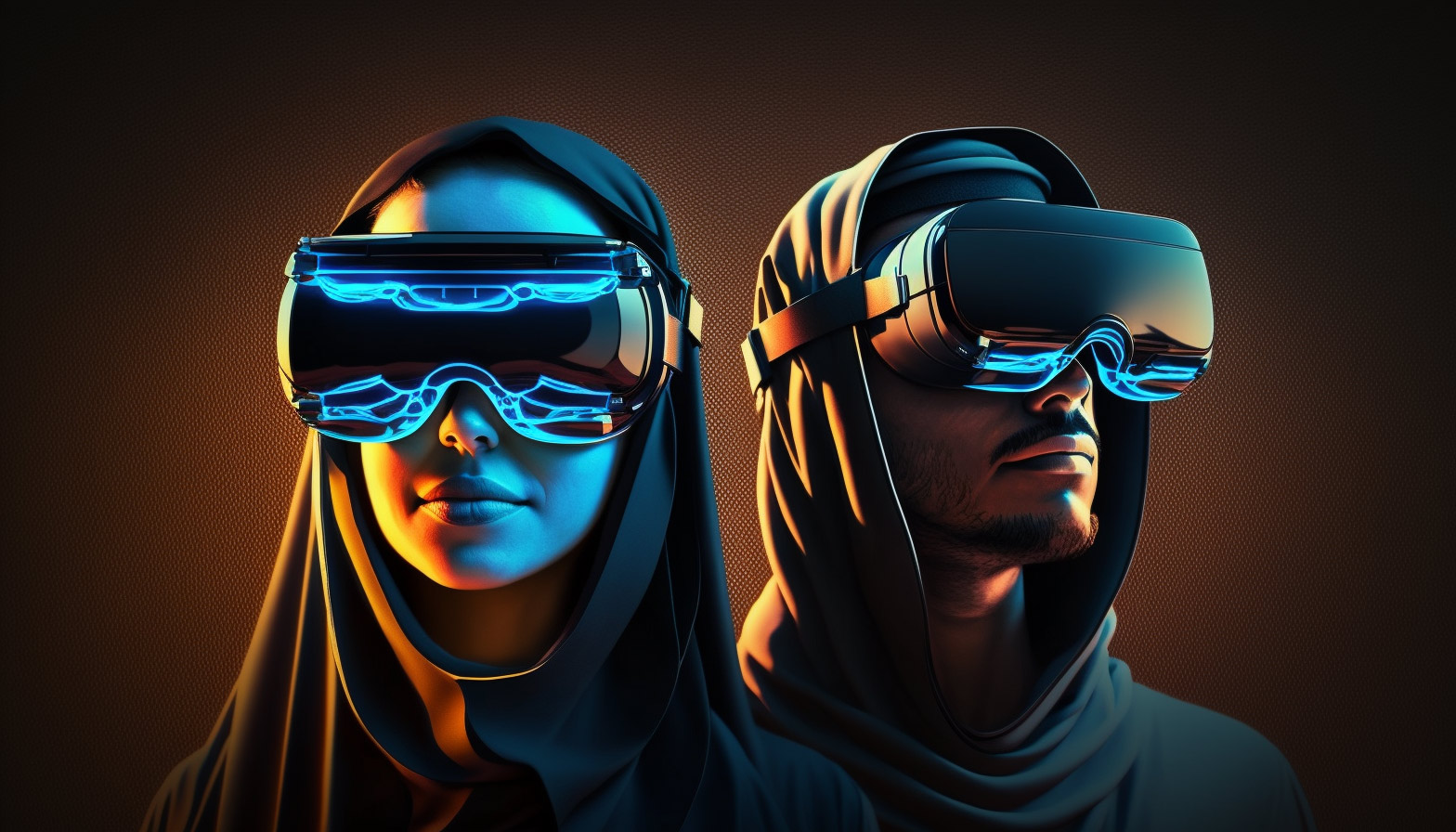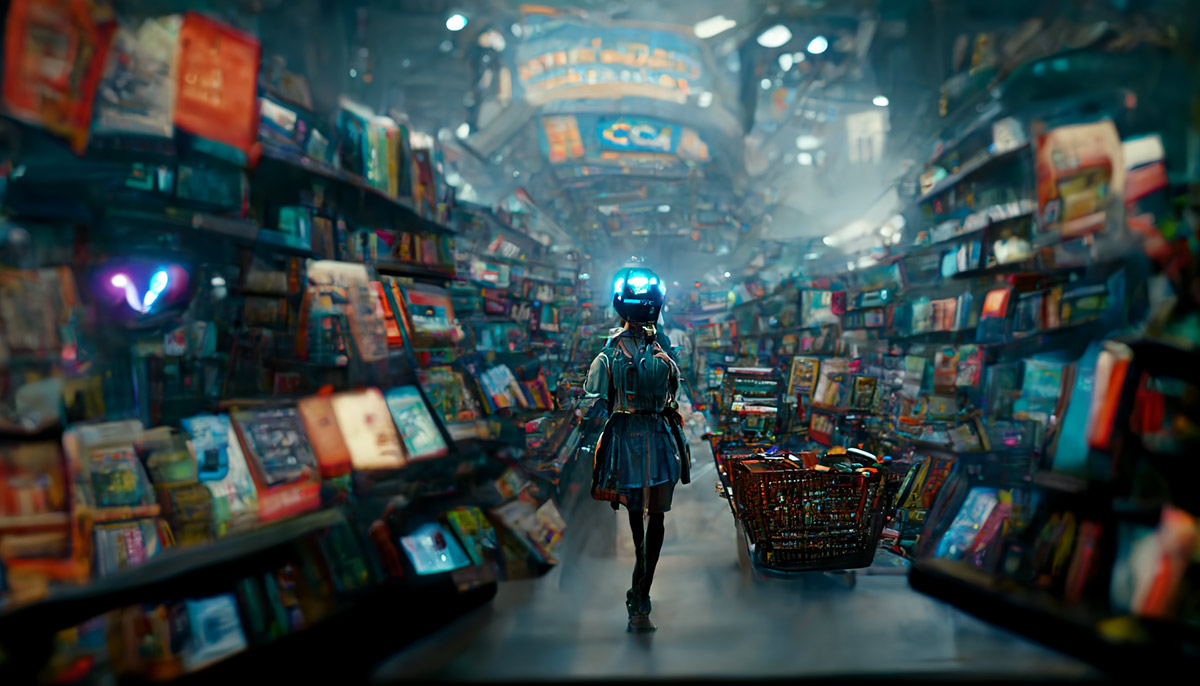AI Marketing
Will The Metaverse Change The Landscape Of Digital Marketing?
I remember the days of sitting around my friend’s houses and gaming. Yes, gaming was amazing, exciting and addictive. However, growing up in the 90s meant gaming was new to a wave of teenagers seeing and engaging with something that no one had ever seen before.
Some brands included Spectrum, Commodore 64 and Amstrad, where cartridges and tapes were used to instal the gaming data so you could grab hold of the joystick and engage with playing until the early morning hours.
Other consoles included Sega, Nintendo, PlayStation, Atari and Gameboy, which were about amazing graphics and excellent gameplay. Moving forward 30 years, 2D gaming and 3D visualisation have been developed into a matrix contained within its own universe. You can now put on a headset and be immersed in a new world.
What Is The Metaverse?
The metaverse is a term used to describe a virtual world or space where people can interact with a computer-generated environment and other users in a realistic and immersive way. It is a shared virtual universe that allows for social interaction, commerce, entertainment, and more.
The metaverse concept has been around for several decades, but recent technological advances have made it more feasible than ever before. It is expected to be a next-generation version of the internet that is more immersive, interactive, and engaging.
In the metaverse, users can create their own digital identities or avatars and explore a virtual world that may be similar to the real world or entirely fictional. They can interact with other users, engage in various activities, and even create their own content and experiences.
While the metaverse is still in its early stages of development, many companies are investing in it as they see it as the future of digital interaction and commerce.

What Can You Do In The Metaverse?
When you enter the metaverse through a headset, you become a user. However, as a user, you can do many exciting things, including:
- Socialising – users can interact with others in virtual environments and engage in activities such as chatting, attending events, and playing games
- Gaming – the metaverse offers a variety of games, from classic video games to immersive experiences that take advantage of the metaverse’s unique features
- Creating content – users can create and share their own content, including games, virtual items, and even virtual real estate
- Commerce – the metaverse offers new opportunities for buying and selling virtual goods and services, such as virtual real estate, digital art, and virtual experiences
- Education – Enjoy new platforms for immersive learning experiences that engage students and promote collaboration
- Entertainment – use the metaverse for various entertainment, from concerts and live performances to virtual theme parks and immersive experiences
- Work – the metaverse can provide a new platform for remote work, collaboration, and communication, allowing people to work together in a virtual environment.
The possibilities are endless, and as the technology and infrastructure for the metaverse continue to develop, we can expect even more exciting and innovative experiences to emerge.

How Are Businesses Using The Metaverse?
Businesses use the metaverse in various ways to engage with customers, enhance their brand, and create new revenue streams. Some examples include:
- Companies use the metaverse to host virtual events, such as conferences, product launches, and trade shows. These events can reach a global audience and provide an immersive experience that cannot be replicated in the physical world
- Retailers use the metaverse to create virtual stores and showrooms, allowing customers to browse and purchase products in a virtual environment
- Brands can advertise in the metaverse by creating virtual billboards, sponsored experiences, and product placements
- Companies are buying and selling virtual real estate in the metaverse, creating new revenue streams and building their brand in the process
- Brands can create games and other experiences that promote their products and services or sponsor existing games and experiences
- Businesses use the metaverse to create virtual workspaces, allowing employees to collaborate and communicate in a virtual environment
- Brands can create unique and immersive virtual experiences that engage customers in new ways, such as virtual concerts, theme parks, etc.
As the metaverse continues to develop, we can expect to see even more innovative ways businesses use it to connect with customers and create new revenue streams.
How Will The Metaverse Change Digital Marketing?
The metaverse has the potential to completely transform digital marketing by offering new ways to engage with consumers and create immersive brand experiences. Some ways that the metaverse could change digital marketing include:
Immersive Advertising
Immersive advertising is a type of advertising that seeks to create an immersive experience for the viewer or user. It aims to engage the user deeper than traditional advertising by providing an interactive and engaging experience.
With the rise of new technologies, such as virtual reality (VR) and augmented reality (AR), to create these experiences. Immersive advertising can take many forms, such as a VR experience that allows the user to explore a product or service, an AR ad that overlays digital content in the real world, or an interactive game that promotes a brand.
The goal of immersive advertising is to capture the user’s attention and create a memorable experience that leads to greater brand awareness and engagement. By immersing the user in a branded experience, it can create a stronger emotional connection between the user and the brand.
Immersive advertising can be particularly effective for reaching younger audiences who are increasingly turning away from traditional advertising channels. It is also a growing trend in the marketing industry as new technologies emerge and offer new ways to create engaging consumer experiences.
Brands could create immersive advertising experiences in the metaverse, such as interactive games and branded experiences that users can engage with.
Virtual Product Placement
Virtual product placement is the placement of branded products within virtual environments, such as in video games, movies, and other digital media. It is a form of advertising that promotes a brand or product by integrating it seamlessly into the virtual environment.
Product placement can take many forms, such as a branded vehicle in a racing game or a branded beverage in a virtual kitchen. It is designed to be unobtrusive and blend naturally into the virtual environment, creating a subtle form of advertising that is less disruptive than traditional ads.
The metaverse offers several advantages over traditional product placement in movies and TV shows. In the virtual world, products can be easily inserted and removed, making it easier for brands to target specific audiences and measure the effectiveness of their campaigns. It also offers more flexibility regarding placement, as brands can choose where and how their products are displayed.
Virtual product placement can be particularly effective for reaching younger audiences who are increasingly turning away from traditional advertising channels. It can also provide a more cost-effective way for brands to reach a global audience, as virtual products can be placed in games and other media that are played around the world.
Overall, virtual product placement is an emerging trend in advertising that offers new opportunities for brands to reach audiences in innovative and engaging ways. Brands could place their products within virtual environments, allowing users to interact with them in a way that feels natural and organic.

Virtual Events And Experiences
Virtual events and experiences are events that take place in a virtual environment, such as in the metaverse or other virtual platforms. These events are designed to replicate the experience of an in-person event, such as a conference, concert, or trade show, but in a digital format.
Video communication for events and experiences uses digital platforms to bring together attendees from anywhere in the world. These platforms can range from simple video conferencing tools to more advanced virtual environments that provide an immersive experience.
The virtual event may include various activities, such as live streaming keynote speeches, interactive workshops, virtual networking opportunities, and virtual product demonstrations. Attendees can interact with each other and the event organisers in real-time using tools such as chat rooms, messaging platforms, and virtual avatars.
These new experiences can be customised to suit the needs of different audiences. They can be delivered on various platforms, such as desktop computers, mobile devices, or virtual reality headsets.
There are several advantages to virtual events and experiences, including the ability to reach a global audience, reduced costs, and increased accessibility. Virtual events can be more cost-effective than in-person events, as they eliminate the need for travel and accommodation expenses. They also provide greater accessibility for people with disabilities or those who cannot attend in-person events due to other commitments.
Moreover, virtual events and experiences provide a new way for organisations to connect with their audiences and provide an engaging and immersive experience that can be tailored to meet the needs of a diverse range of attendees. Brands could create virtual events and experiences within the metaverse that allow consumers to engage with the brand in new and exciting ways.
Personalisation
Personalisation in the metaverse tailors the virtual experience to the individual user. This can be achieved through various means, such as using data on the user’s preferences and behaviour, allowing users to customise their avatars or virtual environment, or offering personalised content and experiences.
Personalisation can work in the metaverse through data. Virtual environments can collect data on user behaviour, such as the actions they take, the products they interact with, and the content they consume. This data can tailor the user’s experience, such as offering recommendations for content, products, or experiences likely to interest them.
Another way personalisation can work in the metaverse is through avatar customization. Users can create and customise avatars to reflect their personalities, preferences, and style. This can create a more immersive and engaging experience for the user, as they feel more connected to their virtual representation.
Personalisation can also be achieved through offering personalised content and experiences. For example, virtual environments can offer personalised tours or experiences based on the user’s interests or allow users to interact with branded content in a way that is tailored to their preferences.
The metaverse allows brands and organisations to create engaging and relevant user experiences. By tailoring the virtual experience to the individual user, it can create a stronger emotional connection and increase the likelihood of user engagement and loyalty.

Data Collection
Data collection is a critical component of the metaverse, as it enables virtual environments to provide personalised experiences, enhance advertising efforts, and inform business decisions. By collecting data on user behaviour and preferences, virtual environments can analyse user patterns, identify trends, and provide tailored recommendations for content, products, and experiences.
This can create a more engaging and relevant experience for users, as well as provide valuable insights for businesses. Additionally, virtual environments can use data collection to create more effective advertising campaigns by targeting specific users with relevant ads based on their interests and behaviour.
Moreover, data collection is essential in the metaverse, providing insights that can improve the user experience, inform business decisions, and drive advertising efforts. The metaverse could provide new data collection opportunities for brands by tracking user behaviour and preferences in the virtual world.
Virtual Storefronts
Virtual stores in the metaverse will work by providing an immersive and interactive shopping experience to users. These stores will be designed to replicate the look and feel of a physical store, with virtual shelves displaying products and interactive displays that allow users to view and interact with products in 3D.
Virtual stores will offer a range of products, from digital goods such as virtual clothing and accessories to physical products that can be shipped to the user’s physical address. The virtual store experience will be highly personalised, with the ability to tailor the shopping experience to the user’s preferences and interests.
Users can navigate the virtual store using their avatar, moving through the aisles and browsing the shelves. Products will be displayed in a highly visual and interactive way, with the ability to zoom in and view products from different angles. Users can also try on virtual clothing and accessories using their avatar, allowing them to see how the product looks and fits before making a purchase.
Payment and checkout in virtual stores will be seamless, with users able to complete transactions using various payment methods. After making a purchase, users can track their order status and receive notifications when their product is ready for delivery.
Virtual stores in the metaverse provide a new and innovative way for businesses to connect with their customers and offer an immersive and interactive shopping experience. By replicating the look and feel of a physical store, virtual stores can create a sense of familiarity and provide a more engaging and personalised shopping experience for users.
Overall, the metaverse has the potential to change digital marketing by offering new ways to engage with consumers and create immersive brand experiences. It is an exciting development that marketers should keep a close eye on as it continues to evolve.

Would you like help with AI Image Creation, SEO or Web Design? Why not get in touch today?
Hi, I’m Dave. I’ve been building websites and helping businesses grow online for over 20 years. If you think we can work together, get in touch today and say hello.

